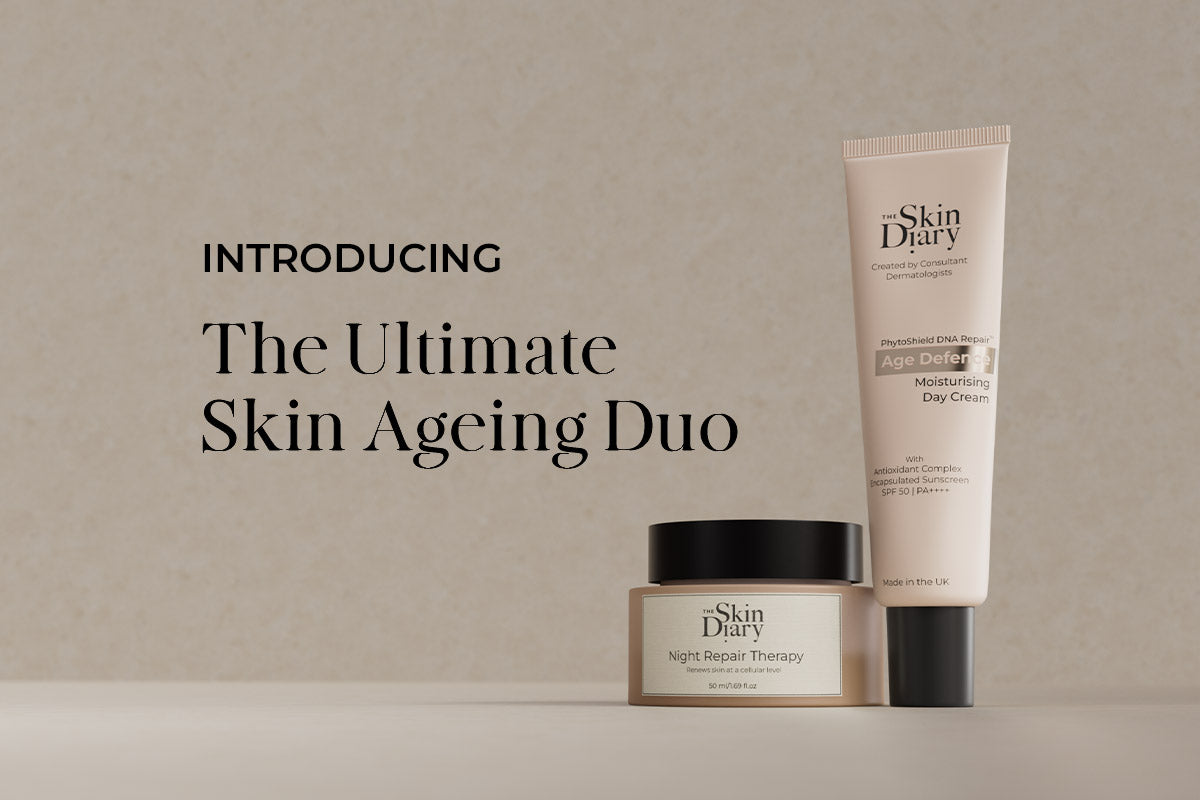One of the biggest problems in the skincare industry is that many products lack the evidence that they do as they promise. Skin ageing is often front and centre of this, driving sales that ultimately leave consumers disappointed and lacking trust. However, science has shown us that there are a number of effective ingredients used to support ageing skin — you just need the right skincare testing.
That’s why at The Skin Diary, we’re big on evidence. We understand the importance of not just telling you a product works, but showing you. This is also why we believe our team’s research and the development of the Manchester Patch Test Assay is a key component that drives our commitment to well-ageing. Here’s everything you need to know about the Manchester Patch Test Assay straight from the people who created it.
What is the Manchester Patch Test Assay?
It’s a skin patch test with a difference.
Created by The Skin Diary’s Professor Chris Griffiths and team, it’s a rapid in-vivo test predicting a product’s ability to restore microfibrils (which strengthen elastic fibres between the dermis and epidermis) in photoaged skin. It shows us exactly which anti-ageing products can repair the skin at a structural level and improve signs of ageing.
This was (and still is) revolutionary for skin ageing. Testing skincare has traditionally been a slow and invasive process and the Manchester Patch Assay changed this by allowing the team to measure product efficacy without the long testing process.
The assay was showcased in 2007 on BBC’s Horizon program to demonstrate the efficacy of Boots’ No7 Protect & Perfect, which Professor Griffiths and his team played a part in developing. This caused the product to be a sell-out (and it still is today, over 15 years later). It’s uncommon for over-the-counter skincare to go through such rigorous testing, proving its effectiveness for ageing skin.
How was the Manchester Patch Assay done?
The clue is in the name ‘patch assay’. This is a patch test, done in a similar way as you would if you get a hair dye test done at the hair salon or test a product on a small portion of your skin before going all in.

A small punch biopsy is taken from photoaged forearm skin to act as the baseline sample. Then, the skincare product is applied to the forearm covered with a protective film. This is reapplied every 4 days for a 12-day period. A new small biopsy is then taken to evaluate the changes in collagen and fibrillin over the course of those few days.
The Manchester Patch Test Assay is a validated gold-standard test for evaluating restoration of collagen and elastic fibre with topical anti-ageing products.
For Night Repair Therapy, biopsies are on photoaged forearm skin of 7 women and 3 men with the mean age 73.
How does the Manchester Patch Test Assay help in real life?

So, how does this help you? Well, it helps us understand which products work for preventing and reversing photodamaged skin. Since 80% of ageing is caused by photodamage (damage caused by the sun), knowing exactly what is going to have an effect at a cellular level almost seems too good to be true.
The next time you wonder or ask us if your Night Repair Therapy works, you’ll find us raving about and pointing you in the direction of the Manchester Patch Assay and its ability to prove results.
Sources:





